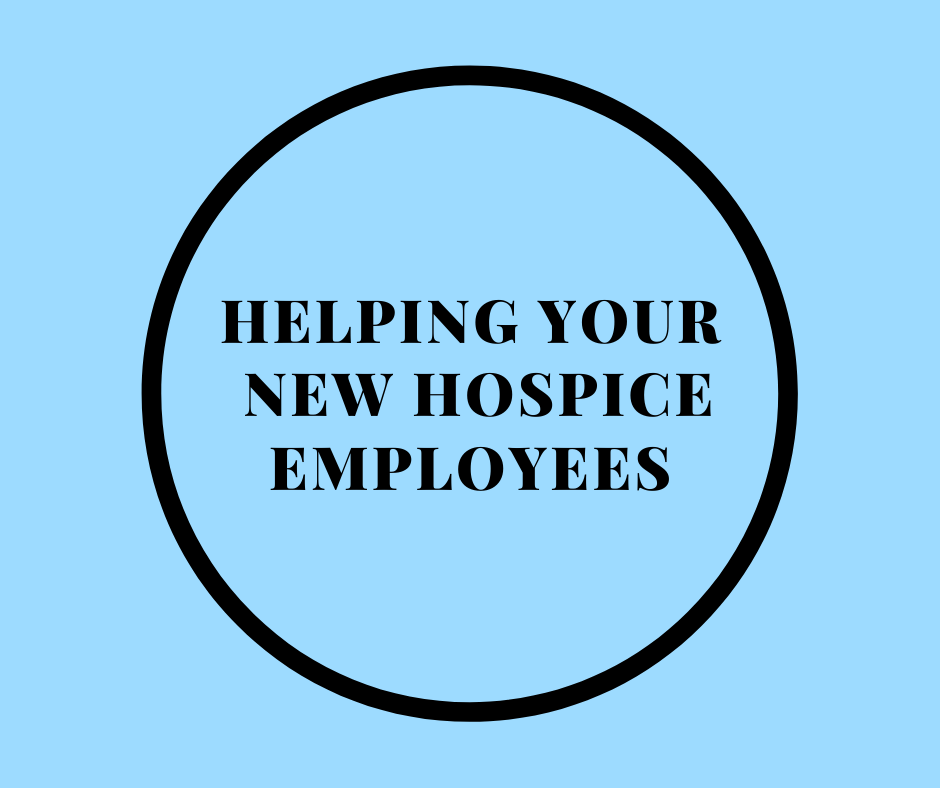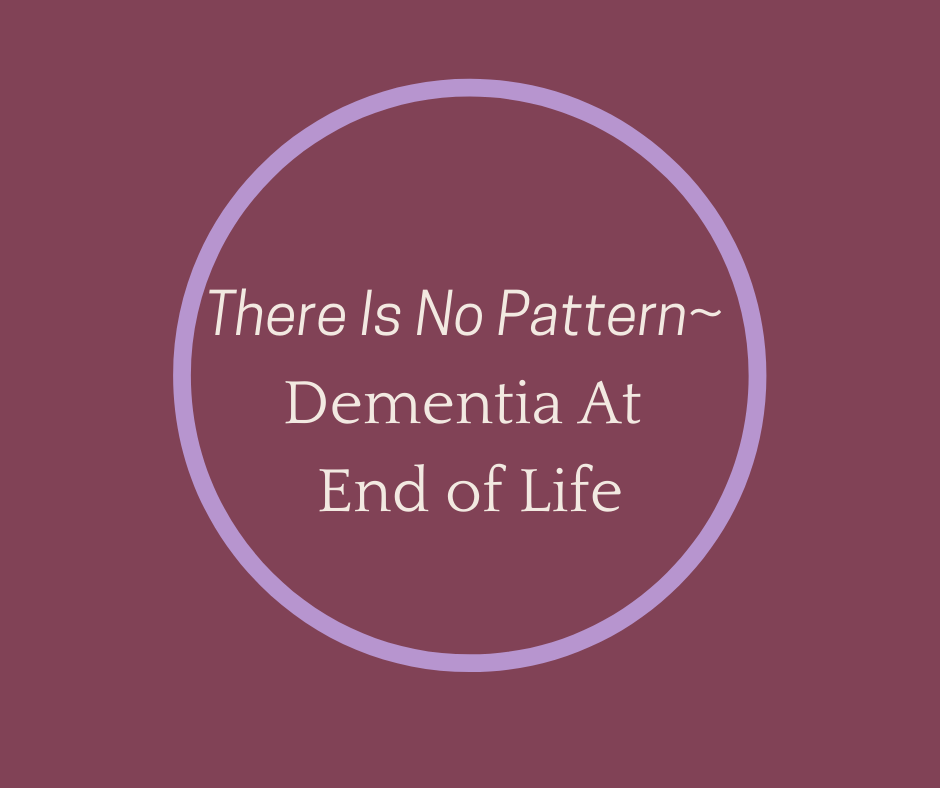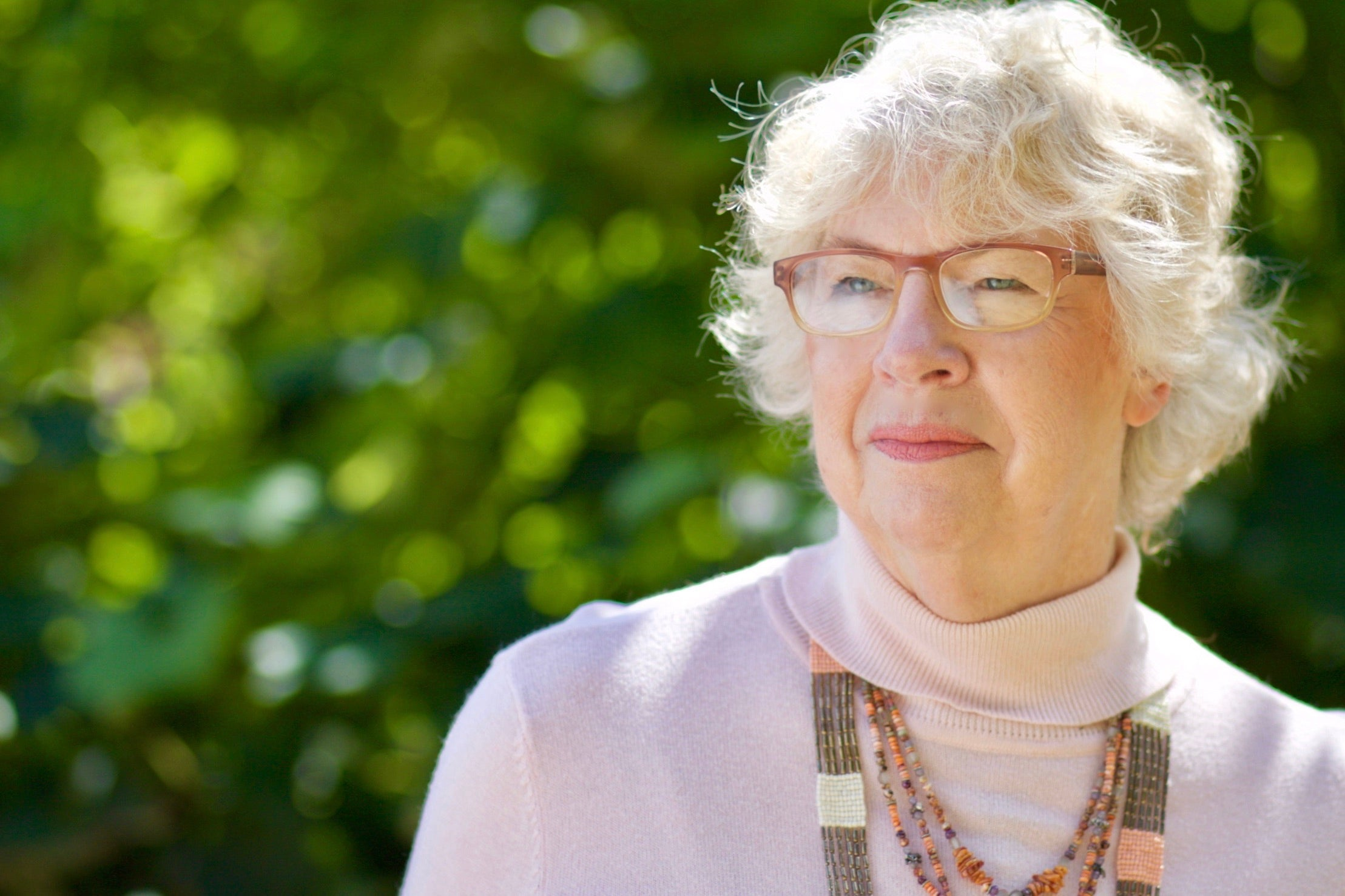Question: How does Hospice work at home?
This is a question that shows up in Google A LOT. I was surprised to see this until I remembered that we Americans don’t think about dying (other people die not me) until life forces us to think about it.
This pandemic has certainly put dying in our face more than usual but our belief still holds, it is others who die, not us, until it is not others.
Even though hospice is doing a lot to educate about end of life and how the program works most of us don’t have the ears to hear or eyes to see until . . .
In case it is “until” for you and your family, here is how hospice works.
First, you need a physician’s order. A physician must request hospice services and sign a paper that says he/she believes the patient has six months or less to live and that you are no longer interested in or appropriate for aggressive treatment.
As a patient or family member you can request that your physician make a hospice referral—that opens the door to talking about prognosis, the "how long" and "what do you expect" questions.
You can also call a local hospice, tell them your concerns, and have them check with your physician about a referral.
Now that you have a referral a hospice representative comes to your home or hospital or nursing facility and talks to you about what services they can provide: RN home visits dealing with symptom management and pain management; help with personal care such as bathing from a nurses aide; emotional support with a social worker and chaplain; volunteer visits and respite care for caregiver relief.
From a financial stand point all the services are paid for by Medicare, Medicaid or insurance. Medications related to the terminal illness are paid for. Medical equipment, hospital bed, wheelchair, and commode are all paid for. A break for caregivers is offered in the form of respite care (respite care is 5 to 7 days in a nursing facility or Hospice House). If symptoms or pain cannot be successfully managed at home a stay in the hospital for a few days is paid.
Here is what I consider the most important part; hospice works at home for you. It provides support, guidance, and education but even more it provides understanding, concern, and heart felt caring for you, the family, and your support team. The hospice goal is to help patient and family live the best they can in the time they have.
Taking care of someone at end of life is different than taking care of someone who will get better, and people don’t die like they do in the movies —— most of us don’t know that.
When faced with end of life decisions and care we bring fear and generally lack of knowledge to the bedside. This is why hospice is so helpful, so beneficial.
Something More... about How Does Hospice Work At Home?
Now that you know how hospice can help support and educate your family, read my blog, Mom Needs Hospice? Here are your questions to choose the right one....








9 comments
barbara karnes
Hi Marina, I am so sorry about your experience with hospice. Unfortunately, just like everything else, there are good apples and there are not so good apples. I hope you spoke to the hospice administrator about your experience and how they could have provided better support and guidance for you. That talk won’t change your experience but it may help others get better care. You’ll be paying it forward.
Blessings! Barbara
Hi Marina, I am so sorry about your experience with hospice. Unfortunately, just like everything else, there are good apples and there are not so good apples. I hope you spoke to the hospice administrator about your experience and how they could have provided better support and guidance for you. That talk won’t change your experience but it may help others get better care. You’ll be paying it forward.
Blessings! Barbara
barbara karnes
Hi Sue, the Medicare Hospice Benefit stipulates a “six month or less” prognosis BUT no one can be so specific as to pinpoint a person’s length of life. Because of that, those people on the benefit are evaluated at various time frames through out their stay on the hospice benefit. If the life threatening illness continues to show signs of advancing the person is recertified to continue receiving the Hospice Benefit (that recertification and continued documented decline can mean a person can receive hospice care for even a couple of years). Hospice’s biggest challenge is getting patients early in their approaching end of life challenge. Most people wait way too long before getting the help and guidance that hospice provides. Thank you for addressing this issue. It may help others reach out for hospice sooner. Blessings! Barbara
Hi Sue, the Medicare Hospice Benefit stipulates a “six month or less” prognosis BUT no one can be so specific as to pinpoint a person’s length of life. Because of that, those people on the benefit are evaluated at various time frames through out their stay on the hospice benefit. If the life threatening illness continues to show signs of advancing the person is recertified to continue receiving the Hospice Benefit (that recertification and continued documented decline can mean a person can receive hospice care for even a couple of years). Hospice’s biggest challenge is getting patients early in their approaching end of life challenge. Most people wait way too long before getting the help and guidance that hospice provides. Thank you for addressing this issue. It may help others reach out for hospice sooner. Blessings! Barbara
barbara karnes
Hi Jayne, your comment “I feel like I, the caregiver, was the patient” is so true. One of the wonderful services hospice provides is recognizing caregivers need care too and providing that attention, guidance and support. That care doesn’t end with the death of their patient but continues in the form of bereavement support for family and caregivers. Hope you were part of that support also. Blessings! Barbara
Hi Jayne, your comment “I feel like I, the caregiver, was the patient” is so true. One of the wonderful services hospice provides is recognizing caregivers need care too and providing that attention, guidance and support. That care doesn’t end with the death of their patient but continues in the form of bereavement support for family and caregivers. Hope you were part of that support also. Blessings! Barbara
Bitsy Condra
We used hospice for my mother who died of cancer in 2018. Our hospice nurse recommended your end of life series. They were very helpful and I bought 10 sets and have shared them with others as the need arises. I will be purchasing the book on hospice today. Thank you for providing this information.
Bitsy Condra
We used hospice for my mother who died of cancer in 2018. Our hospice nurse recommended your end of life series. They were very helpful and I bought 10 sets and have shared them with others as the need arises. I will be purchasing the book on hospice today. Thank you for providing this information.
Bitsy Condra
Marina Maxfied
When my Father was dieing and hospice was assigned he still believed he was going to get better and the hospice nurse was ok with that and I guess I did too until he couldn’t talk anymore and the dosages of morphine increased and he was still clinging to that bar until a new hospice nurse appeared one day unannounced suddenly told us it was time to say our final good-byes. It was all a heart wrenching process. One I still haven’t gotten over after 3 years and never want to experience again. I regret that no one really sat us down and said he is dieing and you need to have those conversations while he can still talk. Instead we wasted time watching TV, trying to make him eat and drink and talking about what we’d do when he would get better.
When my Father was dieing and hospice was assigned he still believed he was going to get better and the hospice nurse was ok with that and I guess I did too until he couldn’t talk anymore and the dosages of morphine increased and he was still clinging to that bar until a new hospice nurse appeared one day unannounced suddenly told us it was time to say our final good-byes. It was all a heart wrenching process. One I still haven’t gotten over after 3 years and never want to experience again. I regret that no one really sat us down and said he is dieing and you need to have those conversations while he can still talk. Instead we wasted time watching TV, trying to make him eat and drink and talking about what we’d do when he would get better.
Shelly Cole
As a patient, I’ve dealt with the issue of being faced with the potential of dying. But I got better. My youngest daughter’s boyfriend died 3 wks ago from liver cancer. His sister was a nurse. Hospice wasn’t brought in until the very last days. I’ve said it before and I’ll say it again, you do NOT want to try to decide in the middle of a crisis what you think someone would want if they were to die. Partly because HOW you know someone, the terms with which you interact with someone will altar what you think someone might want or even value in their last days and moments. And sadly, it’s not about you. It’s about the one that’s dying. The reality is, you can even be the parent of someone who may sadly be dying, but that doesn’t mean you know what your child wants. But the truth is, being in the moment of crisis is NOT the time that you want to face making those types of decisions. Because, you will ALWAYS wonder if you did the right thing. Did I make the right decisions. Chances are you made the choices as best you knew how. But please, talk to your family and friends, yes, it’s going to be awkward but it will absolutely give you peace of mind should something go wrong. It’s funny how much you can love someone that you’ve never met. The one thing that I wanted was to be able to hug that man and thank him for taking such good care of my daughter. I didn’t get to do that. But at least before he died they had the talk of what his wishes were. And she did what he asked her to do. I’d like to think that I broke the ice with my family when we all thought I was dying. Please, have the ugly uncomfortable conversation with you family, with your friends, and most importantly, talk to your doctor about what you do and don’t want. But most importantly, put it in writing and have it notarized and put into your medical fill. You’ll save yourself and your family and friends the pain of wondering if they got it right. Like no other part of life, whether your the one that’s dying of you’re the friend or family member of who’s dying, just remember, you only get one chance to get it right. Sadly, we don’t get a redo! Talk to your teenager and have them fill out the paperwork. Now, they likely don’t really know what they want, but they can change the paperwork as many times as they’d like. Your advanced directives, I’ve found, grow with you. What you want now, is likely to be very different 10 to 20 yrs from now. It’s your death and you get to call the shots. What’s not fair to do is not to NOT take care of YOUR business and leave the rest of your world, that other’s would call your life, in a heap in the middle of your bed making them wonder and guess about what you would want done for you in your last moments, days, or maybe even months prior to your death. My family gets to talk about this a LOT. Partly because of me, but then there’s my moms husband. He’s almost 80 he keeps trying to die and then he snaps back out of it, by waking up every morning trying figure out why’s he still here! Life’s full of messes and as your in the dying process, its really just not the time to try to clean up that mess. I promise, you won’t have the energy to do it! I hope that I’ve managed to encourage at least one person to do right by their friends and family to set up what you want done in your final days. If you need health, your primary doctor can help you understand what you need and want in your advanced directives and living will!
As a patient, I’ve dealt with the issue of being faced with the potential of dying. But I got better. My youngest daughter’s boyfriend died 3 wks ago from liver cancer. His sister was a nurse. Hospice wasn’t brought in until the very last days. I’ve said it before and I’ll say it again, you do NOT want to try to decide in the middle of a crisis what you think someone would want if they were to die. Partly because HOW you know someone, the terms with which you interact with someone will altar what you think someone might want or even value in their last days and moments. And sadly, it’s not about you. It’s about the one that’s dying. The reality is, you can even be the parent of someone who may sadly be dying, but that doesn’t mean you know what your child wants. But the truth is, being in the moment of crisis is NOT the time that you want to face making those types of decisions. Because, you will ALWAYS wonder if you did the right thing. Did I make the right decisions. Chances are you made the choices as best you knew how. But please, talk to your family and friends, yes, it’s going to be awkward but it will absolutely give you peace of mind should something go wrong. It’s funny how much you can love someone that you’ve never met. The one thing that I wanted was to be able to hug that man and thank him for taking such good care of my daughter. I didn’t get to do that. But at least before he died they had the talk of what his wishes were. And she did what he asked her to do. I’d like to think that I broke the ice with my family when we all thought I was dying. Please, have the ugly uncomfortable conversation with you family, with your friends, and most importantly, talk to your doctor about what you do and don’t want. But most importantly, put it in writing and have it notarized and put into your medical fill. You’ll save yourself and your family and friends the pain of wondering if they got it right. Like no other part of life, whether your the one that’s dying of you’re the friend or family member of who’s dying, just remember, you only get one chance to get it right. Sadly, we don’t get a redo! Talk to your teenager and have them fill out the paperwork. Now, they likely don’t really know what they want, but they can change the paperwork as many times as they’d like. Your advanced directives, I’ve found, grow with you. What you want now, is likely to be very different 10 to 20 yrs from now. It’s your death and you get to call the shots. What’s not fair to do is not to NOT take care of YOUR business and leave the rest of your world, that other’s would call your life, in a heap in the middle of your bed making them wonder and guess about what you would want done for you in your last moments, days, or maybe even months prior to your death. My family gets to talk about this a LOT. Partly because of me, but then there’s my moms husband. He’s almost 80 he keeps trying to die and then he snaps back out of it, by waking up every morning trying figure out why’s he still here! Life’s full of messes and as your in the dying process, its really just not the time to try to clean up that mess. I promise, you won’t have the energy to do it! I hope that I’ve managed to encourage at least one person to do right by their friends and family to set up what you want done in your final days. If you need health, your primary doctor can help you understand what you need and want in your advanced directives and living will!
Barbara Walters
I order many of your booklets and keep them on hand in case one of my friends need help. Thank you for keeping them affordable. These are a God Send,, especially “Gone From My Sight”. Thanks for sharing your knowledge.
I order many of your booklets and keep them on hand in case one of my friends need help. Thank you for keeping them affordable. These are a God Send,, especially “Gone From My Sight”. Thanks for sharing your knowledge.
Sue
Your books are a wonderful help. My family & I are grateful for hospice. I have your books & keep copies of Gone from my Sight to give others. I do have an issue with “if dr thinks you have 6 months or less..” My husband had pulmonary fibrosis—one of several diseases that allows hospice to take over longer than 6 months. He was on it one year & what a difference it made to him & our quality of life. If I had listened to his dr about the “6 month” rule Bob’s—& my—year would have been so much worse. I was led by the Lord to talk to hospice & they dismissed that “6 month” rule. Thank God.
Your books are a wonderful help. My family & I are grateful for hospice. I have your books & keep copies of Gone from my Sight to give others. I do have an issue with “if dr thinks you have 6 months or less..” My husband had pulmonary fibrosis—one of several diseases that allows hospice to take over longer than 6 months. He was on it one year & what a difference it made to him & our quality of life. If I had listened to his dr about the “6 month” rule Bob’s—& my—year would have been so much worse. I was led by the Lord to talk to hospice & they dismissed that “6 month” rule. Thank God.
Jayne Reed
I felt like I, the caregiver, was the patient of the home hospice team. I don’t think I could have coped without them.
I felt like I, the caregiver, was the patient of the home hospice team. I don’t think I could have coped without them.